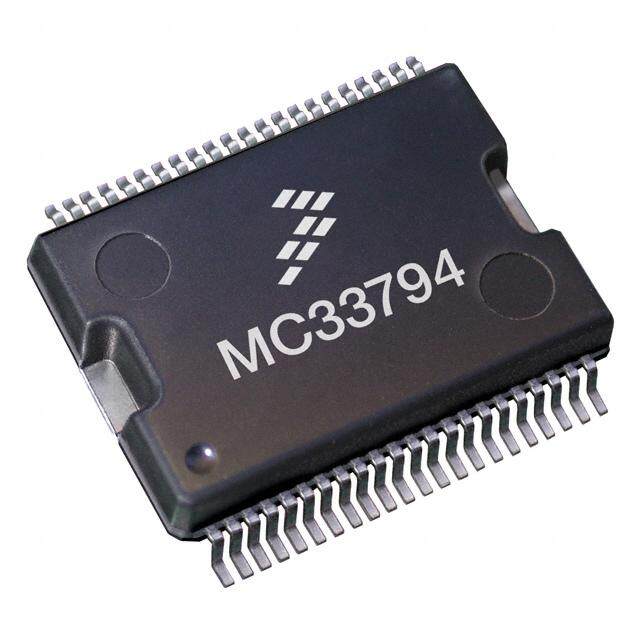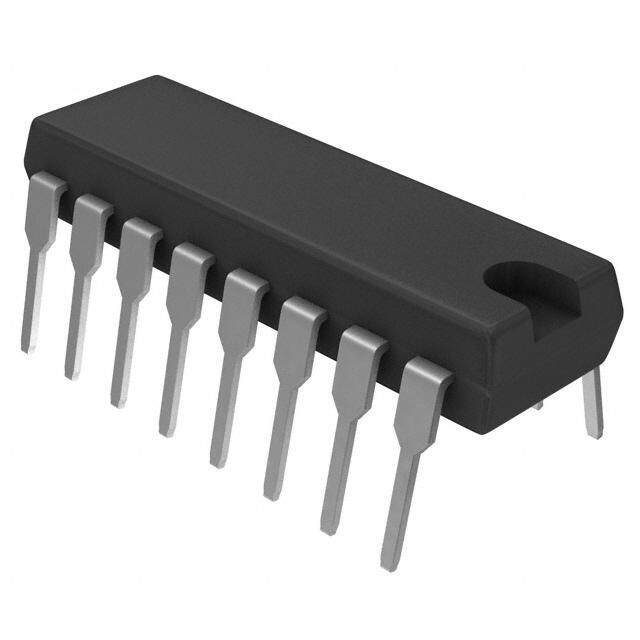ICGOO在线商城 > 集成电路(IC) > 接口 - 传感器和探测器接口 > MAX1452AAE+
- 型号: MAX1452AAE+
- 制造商: Maxim
- 库位|库存: xxxx|xxxx
- 要求:
| 数量阶梯 | 香港交货 | 国内含税 |
| +xxxx | $xxxx | ¥xxxx |
查看当月历史价格
查看今年历史价格
MAX1452AAE+产品简介:
ICGOO电子元器件商城为您提供MAX1452AAE+由Maxim设计生产,在icgoo商城现货销售,并且可以通过原厂、代理商等渠道进行代购。 MAX1452AAE+价格参考¥82.46-¥82.46。MaximMAX1452AAE+封装/规格:接口 - 传感器和探测器接口, 。您可以下载MAX1452AAE+参考资料、Datasheet数据手册功能说明书,资料中有MAX1452AAE+ 详细功能的应用电路图电压和使用方法及教程。
Maxim Integrated的MAX1452AAE+是一款专为桥式传感器设计的高精度模拟信号调节器,主要应用于工业自动化、过程控制、汽车电子和精密测量设备等领域。该器件内含可编程增益放大器(PGA)、可编程偏移校正电路、温度传感器及数字校正逻辑,能够有效提高传感器信号的精度和稳定性。 MAX1452AAE+特别适用于需要高精度测量的压力传感器、称重传感器以及其他桥式传感器系统。其可编程特性允许用户根据具体传感器的特性进行增益和偏移的校准,从而实现最佳性能。此外,该芯片支持宽范围的工作温度,增强了其在恶劣工业环境中的适应能力。 该器件采用16引脚SSOP封装,便于集成到紧凑型设计中,广泛用于工业仪表、医疗设备、测试与测量仪器以及汽车传感器模块等应用场景。
| 参数 | 数值 |
| 产品目录 | 集成电路 (IC)热管理产品 |
| 描述 | IC SENSOR SIGNAL COND 16-SSOP板上安装温度传感器 Precision Sensor Signal Conditioner |
| 产品分类 | |
| 品牌 | Maxim Integrated |
| 产品手册 | |
| 产品图片 |
|
| rohs | 符合RoHS无铅 / 符合限制有害物质指令(RoHS)规范要求 |
| 产品系列 | 板上安装温度传感器,Maxim Integrated MAX1452AAE+- |
| 数据手册 | |
| 产品型号 | MAX1452AAE+ |
| 产品培训模块 | http://www.digikey.cn/PTM/IndividualPTM.page?site=cn&lang=zhs&ptm=25703http://www.digikey.cn/PTM/IndividualPTM.page?site=cn&lang=zhs&ptm=25705 |
| 产品目录页面 | |
| 产品种类 | 板上安装温度传感器 |
| 供应商器件封装 | 16-SSOP |
| 关闭 | No Shutdown |
| 准确性 | 0.1 % |
| 包装 | 管件 |
| 商标 | Maxim Integrated |
| 安装类型 | 表面贴装 |
| 安装风格 | SMD/SMT |
| 封装 | Bulk |
| 封装/外壳 | 16-SSOP(0.209",5.30mm 宽) |
| 封装/箱体 | SSOP-16 |
| 工厂包装数量 | 76 |
| 应用说明 | 点击此处下载产品Datasheet点击此处下载产品Datasheet点击此处下载产品Datasheet点击此处下载产品Datasheet点击此处下载产品Datasheet点击此处下载产品Datasheet点击此处下载产品Datasheet点击此处下载产品Datasheet点击此处下载产品Datasheet点击此处下载产品Datasheet点击此处下载产品Datasheet点击此处下载产品Datasheet点击此处下载产品Datasheet点击此处下载产品Datasheet点击此处下载产品Datasheet点击此处下载产品Datasheet点击此处下载产品Datasheet点击此处下载产品Datasheet点击此处下载产品Datasheet点击此处下载产品Datasheet点击此处下载产品Datasheet点击此处下载产品Datasheet点击此处下载产品Datasheet |
| 接口 | 串行 |
| 数字输出-位数 | 16 bit |
| 数字输出-总线接口 | Serial |
| 最大功率耗散 | 640 mW |
| 最大工作温度 | + 125 C |
| 最小工作温度 | - 40 C |
| 标准包装 | 76 |
| 特色产品 | http://www.digikey.com/product-highlights/cn/zh/maxim-max1452-signal-processor/2437 |
| 电流-电源 | 2.5mA |
| 电源电压-最大 | 5.5 V |
| 电源电压-最小 | 4.5 V |
| 电源电流 | 2 mA |
| 类型 | 信号调节器 |
| 系列 | MAX1452A |
| 设备功能 | Signal Conditioner |
| 输入类型 | 模拟 |
| 输出类型 | Analog |
| 零件号别名 | MAX1452A |

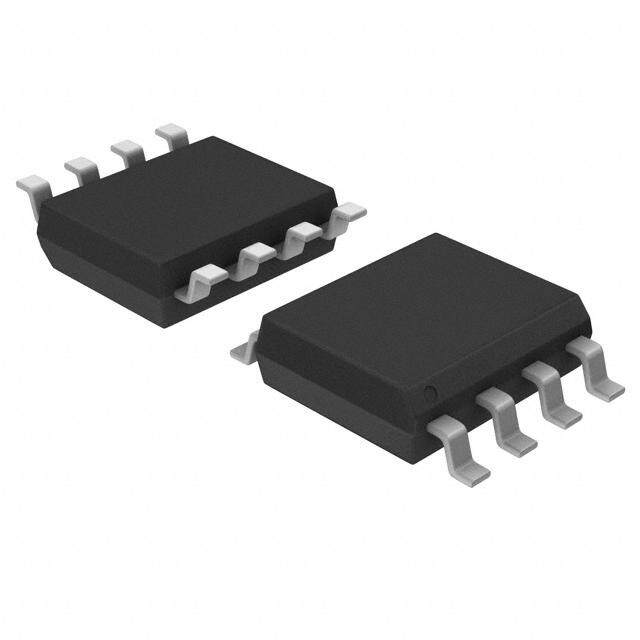
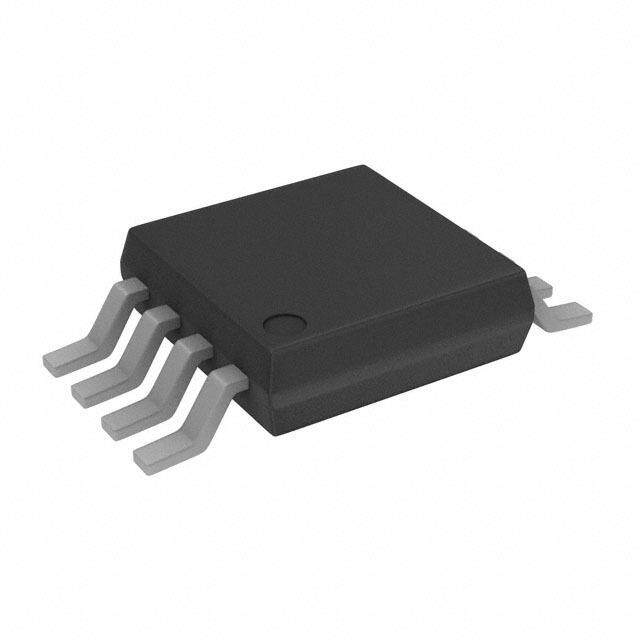
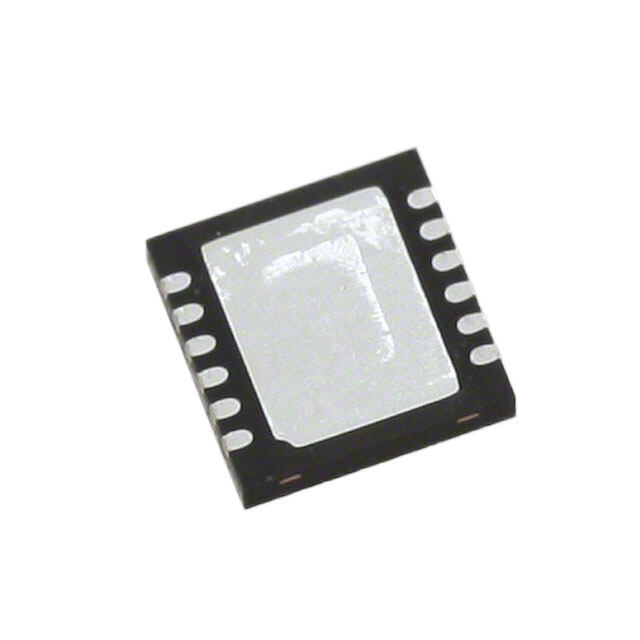




- 商务部:美国ITC正式对集成电路等产品启动337调查
- 曝三星4nm工艺存在良率问题 高通将骁龙8 Gen1或转产台积电
- 太阳诱电将投资9.5亿元在常州建新厂生产MLCC 预计2023年完工
- 英特尔发布欧洲新工厂建设计划 深化IDM 2.0 战略
- 台积电先进制程称霸业界 有大客户加持明年业绩稳了
- 达到5530亿美元!SIA预计今年全球半导体销售额将创下新高
- 英特尔拟将自动驾驶子公司Mobileye上市 估值或超500亿美元
- 三星加码芯片和SET,合并消费电子和移动部门,撤换高东真等 CEO
- 三星电子宣布重大人事变动 还合并消费电子和移动部门
- 海关总署:前11个月进口集成电路产品价值2.52万亿元 增长14.8%
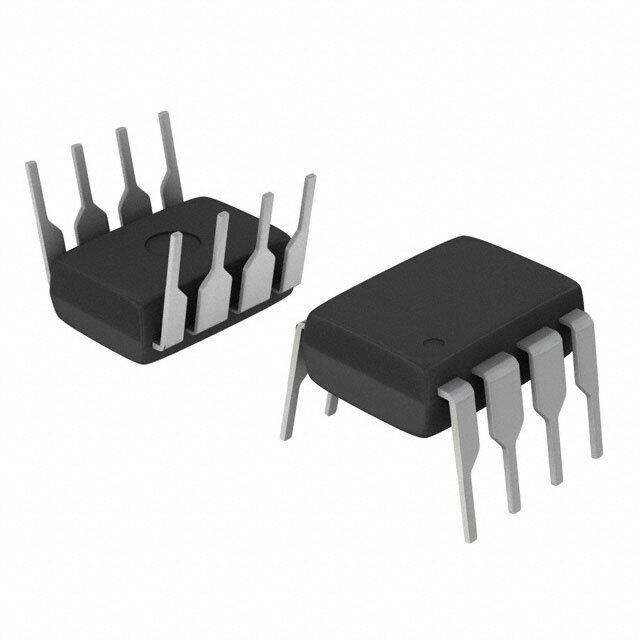
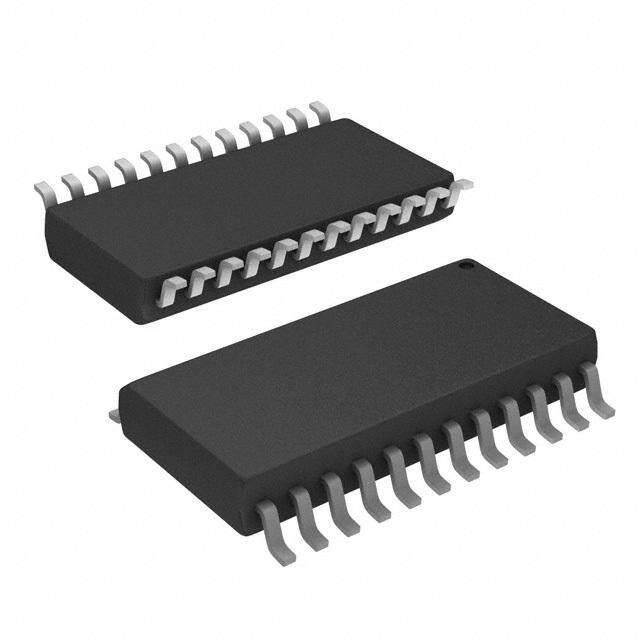

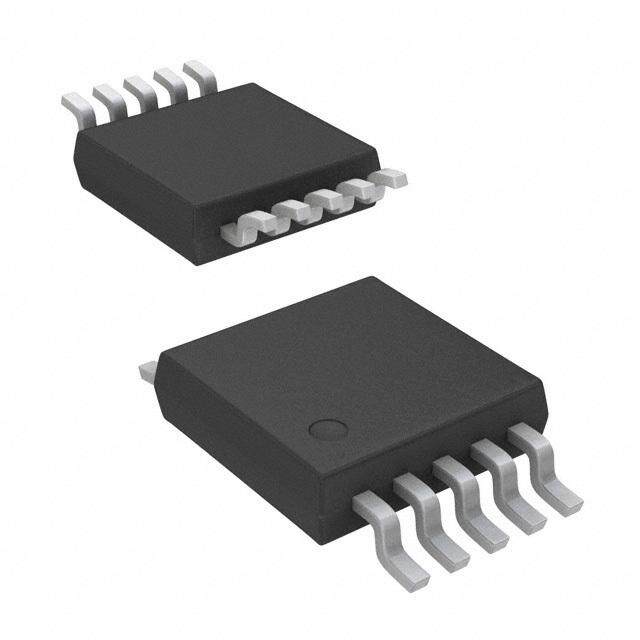


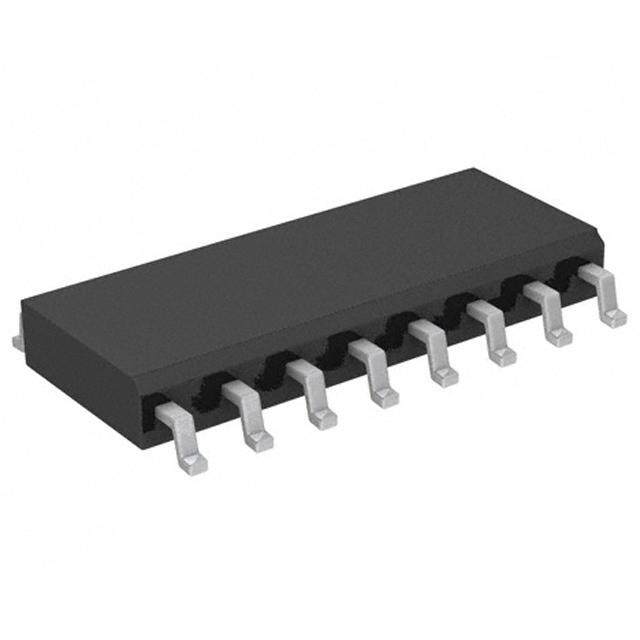

PDF Datasheet 数据手册内容提取
EVALUATION KIT AVAILABLE MAX1452 Low-Cost Precision Sensor Signal Conditioner General Description Benefits and Features The MAX1452 is a highly integrated analog-sensor sig- ● Single-Chip, Integrated Analog Signal Path Reduces nal processor optimized for industrial and process con- Design Time and Saves Space in a Complete trol applications utilizing resistive element sensors. The Precision Sensor Solution MAX1452 provides amplification, calibration, and temper- • Provides Amplification, Calibration, and ature compensation that enables an overall performance Temperature Compensation approaching the inherent repeatability of the sensor. The • Fully Analog Signal Path fully analog signal path introduces no quantization noise • Accommodates Sensor Output Sensitivities from in the output signal while enabling digitally controlled trim- 4mV/V to 60mV/V ming with the integrated 16-bit DACs. Offset and span are • Single-Pin Digital Programming calibrated using 16-bit DACs, allowing sensor products to • No External Trim Components Required be truly interchangeable. • 16-Bit Offset and Span Calibration Resolution • Supports Both Current and Voltage Bridge Excitation The MAX1452 architecture includes a programmable • Fast 150μs Step Response sensor excitation, a 16-step programmable-gain ampli- • On-Chip Uncommitted Op Amp fier (PGA), a 768-byte (6144 bits) internal EEPROM, four 16-bit DACs, an uncommitted op amp, and an on-chip ● On-Chip Lookup Table Supports Multipoint temperature sensor. In addition to offset and span com- Calibration Temperature Correction Improving pensation, the MAX1452 provides a unique temperature System Performance compensation strategy for offset TC and FSOTC that was ● Secure-Lock™ Prevents Data Corruption developed to provide a remarkable degree of flexibility ● Low 2mA Current Consumption Simplifies Power- while minimizing testing costs. Supply Design in 4–20mA Applications The MAX1452 is packaged for the commercial, industrial, and automotive temperature ranges in 16-pin SSOP/ Ordering Information TSSOP and 24-pin TQFN packages. PART TEMP RANGE PIN-PACKAGE Customization MAX1452CAE+ 0°C to +70°C 16 SSOP Maxim can customize the MAX1452 for high-volume dedicated applications. Using our dedicated cell library MAX1452EAE+ -40°C to +85°C 16 SSOP of more than 2000 sensor-specific functional blocks, MAX1452AAE+ -40°C to +125°C 16 SSOP Maxim can quickly provide a modified MAX1452 solution. MAX1452AUE+ -40°C to +125°C 16 TSSOP Contact Maxim for further information. MAX1452ATG+ -40°C to +125°C 24 TQFN-EP* Applications MAX1452C/D 0°C to +70°C Dice** ● Pressure Sensors ● Transducers and Transmitters +Denotes a lead(Pb)-free/RoHS-compliant package. *EP = Exposed pad. ● Strain Gauges **Dice are tested at TA = +25°C, DC parameters only. ● Pressure Calibrators and Controllers ● Resistive Elements Sensors Detailed Block Diagram and Pin Configurations appear at ● Accelerometers the end of data sheet. ● Humidity Sensors Outputs Supported ● 4–20mA ● 0 to +5V (Rail-to-Rail) ● +0.5V to +4.5V Ratiometric Secure-Lock is a trademark of Maxim Integrated Products, Inc. ● +2.5V to ±2.5V 19-1829; Rev 5; 4/15
MAX1452 Low-Cost Precision Sensor Signal Conditioner Absolute Maximum Ratings Supply Voltage, VDD to VSS.........................................-0.3V, +6V Operating Temperature: Supply Voltage, VDD to VDDF................................-0.5V to +0.5V MAX1452CAE+/MAX1452C/D.............................0°C to +70°C All Other Pins...................................(VSS - 0.3V) to (VDD + 0.3V) MAX1452EAE+.................................................-40°C to +85°C Short-Circuit Duration, FSOTC, OUT, BDR, MAX1452AAE+...............................................-40°C to +125°C AMPOUT................................................................Continuous MAX1452AUE+..............................................-40°C to +125°C Continuous Power Dissipation (TA = +70°C) MAX1452ATG+...............................................-40°C to +125°C 16-Pin SSOP/TSSOP (derate 8.00mW/°C above +70°C)..640mW Junction Temperature.......................................................+150°C 24-Pin TQFN (derate 20.8mW/°C above +70°C).................1.67W Storage Temperature Range .............................-65°C to +150°C Lead Temperature (soldering, 10s) ................................ +300°C Stresses beyond those listed under “Absolute Maximum Ratings” may cause permanent damage to the device. These are stress ratings only, and functional operation of the device at these or any other conditions beyond those indicated in the operational sections of the specifications is not implied. Exposure to absolute maximum rating conditions for extended periods may affect device reliability. Electrical Characteristics (VDD = VDDF = +5V, VSS = 0V, TA = +25°C, unless otherwise noted.) PARAMETER SYMBOL CONDITIONS MIN TYP MAX UNITS GENERAL CHARACTERISTICS Supply Voltage VDD 4.5 5.0 5.5 V EEPROM Supply Voltage VDDF 4.5 5.0 5.5 V Supply Current IDD (Note 1) 2.0 2.5 mA Maximum EEPROM Erase/ Write Current IDDFW 30 mA Maximum EEPROM Read Current IDDFR 12 mA Oscillator Frequency fOSC 0.85 1 1.15 MHz ANALOG INPUT Input Impedance RIN 1 MI Input-Referred Offset Tempco (Notes 2, 3) P1 µV/°C Input-Referred Adjustable Offset TC = 0 at minimum gain (Note 4) P150 mV Offset Range Amplifier Gain Nonlinearity Percent of +4V span, VOUT = +0.5V to 0.01 % 4.5V Specified for common-mode voltages Common-Mode Rejection Ratio CMRR 90 dB between VSS and VDD (Note 2) Input Referred Adjustable 4 to (Note 5) mV/V FSO Range 60 ANALOG OUTPUT Differential Signal-Gain Range Selectable in 16 steps 39 to 234 V/V Configuration [5:2] 0000bin 34 39 46 Configuration [5:2] 0001bin 47 52 59 Differential Signal Gain Configuration [5:2] 0010bin 58 65 74 V/V Configuration [5:2] 0100bin 82 91 102 Configuration [5:2] 1000bin 133 143 157 Maximum Output-Voltage Swing No load from each supply 0.02 V www.maximintegrated.com Maxim Integrated │ 2
MAX1452 Low-Cost Precision Sensor Signal Conditioner Electrical Characteristics (continued) (VDD = VDDF = +5V, VSS = 0V, TA = +25°C, unless otherwise noted.) PARAMETER SYMBOL CONDITIONS MIN TYP MAX UNITS Output-Voltage Low IOUT = 1mA sinking, TA = TMIN to TMAX 0.100 0.20 V Output-Voltage High IOUT = 1mA sourcing, TA = TMIN to TMAX 4.75 4.87 V Output Impedance at DC 0.1 Ω Output Offset Ratio ΔVOUT/ 0.90 1.05 1.20 V/V ΔOffset Output Offset TC Ratio ΔVOUT/ 0.9 1 1.2 V/V ΔOffset TC Step Response and IC 150 µs (63% Final Value) Maximum Capacitive Load 1 µF DC to 1kHz (gain = minimum, source Output Noise impedance = 5kΩ VDDF filter) 0.5 mVRMS BRIDGE DRIVE Bridge Current IBDR RL = 1.7kΩ 0.1 0.5 2 mA Current Mirror Ratio AA RISOURCE = internal 10 12 14 A/A VSPAN Range (Span Code) TA = TMIN to TMAX 4000 C000 hex DIGITAL-TO-ANALOG CONVERTERS DAC Resolution 16 Bits ODAC Bit Weight ΔΔVCOoUdTe/ DAC reference = VDD = +5.0V 76 µV/bit OTCDAC Bit Weight ΔΔVCOoUdTe/ DAC reference = VBDR = +2.5V 38 µV/bit FSODAC Bit Weight ΔΔVCOoUdTe/ DAC reference = VDD = +5.0V 76 µV/bit FSOTCDAC Bit Weight ΔΔVCOoUdTe/ DAC reference = VBDR = +2.5V 38 µV/bit COARSE OFFSET DAC IRODAC Resolution Including sign 4 Bits IRODAC Bit Weight ΔVOUT/ Input referred, DAC reference = 9 mV/bit ΔCode VDD = +5.0V (Note 6) FSOTC BUFFER Minimum Output-Voltage Swing No load VSS V + 0.1 Maximum Output-Voltage Swing No load VDD - 1.0 V Current Drive VFSOTC = +2.5V -40 +40 µA INTERNAL RESISTORS Current-Source Reference Resistor RISRC 75 kΩ www.maximintegrated.com Maxim Integrated │ 3
MAX1452 Low-Cost Precision Sensor Signal Conditioner Electrical Characteristics (continued) (VDD = VDDF = +5V, VSS = 0V, TA = +25°C, unless otherwise noted.) PARAMETER SYMBOL CONDITIONS MIN TYP MAX UNITS Current-Source Reference Resistor Temperature Coefficient ΔRISRC 1300 ppm/°C FSOTC Resistor RFTC 75 kΩ FSOTC Resistor Temperature Coefficient ΔRFTC 1300 ppm/°C TEMPERATURE-TO-DIGITAL CONVERTER Temperature ADC Resolution 8 Bits Offset P3 LSB Gain 1.45 °C/bit Nonlinearity P0.5 LSB Lowest Digital Output 00 hex Highest Digital Output AF hex UNCOMMITTED OP AMP Open-Loop Gain RL = 100kΩ 90 dB Input Common-Mode Range VSS VDD V Output Swing No load, TA = TMIN to TMAX V0S.0S2 + V0D.0D2 - V Output-Voltage High 1mA source, TA = TMIN to TMAX 4.85 4.90 V Output-Voltage Low 1mA sink, TA = TMIN to TMAX 0.05 0.15 V Offset VIN+ = +2.5V, unity-gain buffer -20 +20 mV Unity-Gain Bandwidth 2 MHz EEPROM Maximum Erase/Write Cycles (Note 7) 10k Cycles Minimum Erase Time (Note 8) 6 ms Minimum Write Time 100 µs Note 1: Excludes sensor or load current. Note 2: All electronics temperature errors are compensated together with sensors errors. Note 3: The sensor and the MAX1452 must be at the same temperature during calibration and use. Note 4: This is the maximum allowable sensor offset. Note 5: This is the sensor’s sensitivity normalized to its drive voltage, assuming a desired full span output of +4V and a bridge volt- age range of +1.7V to +4.25V. Note 6: Bit weight is ratiometric to VDD. Note 7: Programming of the EEPROM at room temperature is recommended. Note 8: Allow a minimum of 6ms elapsed time before sending any command. www.maximintegrated.com Maxim Integrated │ 4
MAX1452 Low-Cost Precision Sensor Signal Conditioner Typical Operating Characteristics (VDD = +5V, TA = +25°C, unless otherwise noted.) OFFSET DAC DNL AMPLIFIER GAIN NONLINEARITY 52..05 MAX1452 toc01 HT LINE (mV) 52..05 OOFFSSDTOOCADTDCCAA =DCC 6A ==2C 540 0=0h 08e00xh0e0xhex MAX1452 toc02 G AI PGA INDEX = 0 DNL (mV) 0 FROM STR 0 IRO = 2 R O R R -2.5 E-2.5 T U P T U O -5.0 -5.0 0 10k 20k 30k 40k 50k 60k 70k -50 -40 -30 -20 -10 0 10 20 30 40 50 DAC CODE INPUT VOLTAGE [INP - INM] (mV) OUTPUT NOISE MAX1452 toc03 OUT 10mV/div 400µs/div C = 4.7µF, RLOAD = 1kΩ Pin Description PIN NAME FUNCTION SSOP/TSSOP TQFN-EP 1 1 ISRC Bridge Drive Current Mode Setting High ESD and Scan Path Output Signal. May need a 0.1µF capacitor, in 2 2 OUT noisy environments. OUT may be parallel connected to DIO. 3 3 VSS Negative Supply Voltage 4 4 INM Bridge Negative Input. Can be swapped to INP by configuration register. 5 5 BDR Bridge Drive 6 6 INP Bridge Positive Input. Can be swapped to INM by configuration register. 7 7 VDD Positive Supply Voltage. Connect a 0.1µF capacitor from VDD to VSS. 8, 9, 13, 16, 20, 22, No Connection. Not internally connected; leave unconnected (TQFN — N.C. 23, 24 package only). 8 10 TEST Internally Connected. Connect to VSS. www.maximintegrated.com Maxim Integrated │ 5
MAX1452 Low-Cost Precision Sensor Signal Conditioner Pin Description (continued) PIN NAME FUNCTION SSOP/TSSOP TQFN-EP Positive Supply Voltage for EEPROM. Connect a 1µF capacitor from 9 11 VDDF VDDF to VSS. Connect VDDF to VDD or for improved noise performance connect a 30Ω resistor to VDD. 10 12 UNLOCK Secure-Lock Disable. Allows communication to the device. 11 14 DIO Digital Input Output. DIO allows communication with the device. 12 15 CLK1M 1MHz Clock Output. The output can be controlled by a configuration bit. 13 17 AMPOUT Uncommitted Amplifier Output 14 18 AMP- Uncommitted Amplifier Negative Input 15 19 AMP+ Uncommitted Amplifier Positive Input 16 21 FSOTC Full Span TC Buffered Output — — EP Exposed Pad (TQFN Only). Internally connected; connect to VSS. Detailed Description The single pin, serial Digital Input-Output (DIO) communi- cation architecture and the ability to timeshare its activity The MAX1452 provides amplification, calibration, and with the sensor’s output signal enables output sensing temperature compensation to enable an overall perfor- and calibration programming on a single line by paral- mance approaching the inherent repeatability of the sen- lel connecting OUT and DIO. The MAX1452 provides a sor. The fully analog signal-path introduces no quantiza- Secure-Lock feature that allows the customer to prevent tion noise in the output signal while enabling digitally con- modification of sensor coefficients and the 52-byte user trolled trimming with the integrated 16-bit DACs. Offset definable EEPROM data after the sensor has been and span can be calibrated to within ±0.02% of span. calibrated. The Secure-Lock feature also provides a hard- The MAX1452 architecture includes a programmable ware override to enable factory rework and recalibration sensor excitation, a 16-step programmable-gain ampli- by assertion of logic high on the UNLOCK pin. fier (PGA), a 768-byte (6144 bits) internal EEPROM, The MAX1452 allows complete calibration and sensor four 16-bit DACs, an uncommitted op amp, and an on- verification to be performed at a single test station. Once chip temperature sensor. The MAX1452 also provides a calibration coefficients have been stored in the MAX1452, unique temperature compensation strategy for offset TC the customer can choose to retest in order to verify per- and FSOTC that was developed to provide a remarkable formance as part of a regular QA audit or to generate final degree of flexibility while minimizing testing costs. test data on individual sensors. The customer can select from one to 114 temperature The MAX1452’s low current consumption and the integrat- points to compensate their sensor. This allows the ed uncommitted op amp enables a 4–20mA output signal latitude to compensate a sensor with a simple first order format in a sensor that is completely powered from a 2-wire linear correction or match an unusual temperature curve. current loop. Frequency response can be user-adjusted Programming up to 114 independent 16-bit EEPROM to values lower than the 3.2kHz bandwidth by using the locations corrects performance in 1.5°C temperature uncommitted op amp and simple passive components. increments over a range of -40°C to +125°C. For sensors that exhibit a characteristic temperature performance, The MAX1452 (Figure 1) provides an analog amplification a select number of calibration points can be used with path for the sensor signal. It also uses an analog architec- a number of preset values that define the temperature ture for first-order temperature correction. A digitally con- curve. In cases where the sensor is at a different tempera- trolled analog path is then used for nonlinear temperature ture than the MAX1452, the MAX1452 uses the sensor correction. Calibration and correction is achieved by vary- bridge itself to provide additional temperature correction. ing the offset and gain of a programmable-gain-amplifier (PGA) and by varying the sensor bridge excitation current www.maximintegrated.com Maxim Integrated │ 6
MAX1452 Low-Cost Precision Sensor Signal Conditioner Offset Correction VDD Initial offset correction is accomplished at the input stage of the signal gain amplifiers by a coarse offset setting. VDD BIAS Final offset correction occurs through the use of a tem- GENERATOR perature indexed lookup table with 176 16-bit entries. IRO MAX1452 DAC CLK1M The on-chip temperature sensor provides a unique 16-bit OSCILLATOR TEST offset trim value from the table with an indexing resolu- INP tion of approximately 1.5°C from -40°C to +125°C. Every ∑ PGA OUT millisecond, the on-chip temperature sensor provides INM indexing into the offset lookup table in EEPROM and the resulting value transferred to the offset DAC register. ISRC CURRENT ANAMUX The resulting voltage is fed into a summing junction at SOURCE the PGA output, compensating the sensor offset with a BDR T A = 1 FSOTC resolution of ±76μV (±0.0019% FSO). If the offset TC TEMP N 8S-EBNITS AODRC C - FSO (176) POIC - OFFSET (176)C - OFFSET TCC - FSO TC TEPMOLOPINEO1TR7KS6A UFTPOURRE DisasetA neCesqv ouiersi,rv ysag eliev1t ne.t5tno ° Ctztohe. eroTo nO hetehf f esdetneet g mthDrepeAee Cm rao atfhu xartiemesm ucipmnoedr rreteaexctmiunterpgede rbdtahorteiuuft rn esdoe afen rrtsirheooesrr VDDDIOF INEETEPRRNOAML BIT DABIT DABIT DABIT DA OFFSSPEATN A.ND aTrhee omutinsiidmeu mof itnhdee sxpinegc ivfiaeldu eA biss o0l0uhtee xM caoxrimreusmpo nRdaitningg tso. UNLOCK 6144 BITS 16 16 16 16 approximately -69°C. All temperatures below this value 416 BITS output the coefficient value at index 00hex. The maximum FOR USER VDD BDR OP-AMP indexing value is AFhex, which is the highest lookup table AMP+ AMPOUT entry. All temperatures higher than approximately 184°C AMP- output the highest lookup table index value. No indexing wraparound errors are produced. VSS FSO Correction Figure 1. Functional Diagram Two functional blocks control the FSO gain calibration. or voltage. The PGA utilizes a switched capacitor CMOS First, a coarse gain is set by digitally selecting the gain technology, with an input-referred offset trimming range of of the PGA. Second, FSO DAC sets the sensor bridge more than ±150mV with an approximate 3μV resolution current or voltage with the digital input obtained from a (16 bits). The PGA provides gain values from 39V/V to temperature-indexed reference to the FSO lookup table 234V/V in 16 steps. in EEPROM. FSO correction occurs through the use of a temperature indexed lookup table with 176 16-bit entries. The MAX1452 uses four 16-bit DACs with calibration The on-chip temperature sensor provides a unique FSO coefficients stored by the user in an internal 768 x 8 trim from the table with an indexing resolution approach- EEPROM (6144 bits). This memory contains the following ing one 16-bit value at every 1.5°C from -40°C to +125°C. information, as 16-bit wide words: The temperature indexing boundaries are outside of the ● Configuration Register specified Absolute Maximum Ratings. The minimum ● Offset Calibration Coefficient Table indexing value is 00hex corresponding to approximately -69°C. All temperatures below this value output the coef- ● Offset Temperature Coefficient Register ficient value at index 00hex. The maximum indexing ● FSO (Full-Span Output) Calibration Table value is AFhex, which is the highest lookup table entry. ● FSO Temperature Error Correction Coefficient Register All temperatures higher than approximately 184°C output the highest lookup table index value. No indexing wrap- ● 52 bytes (416 bits) uncommitted for customer pro- around errors are produced. gramming of manufacturing data (e.g., serial number and date) www.maximintegrated.com Maxim Integrated │ 7
MAX1452 Low-Cost Precision Sensor Signal Conditioner Linear and Nonlinear For high-accuracy applications (errors less than 0.25%), Temperature Compensation the first-order offset and FSO TC error should be com- pensated with the offset TC and FSOTC DACs, and the Writing 16-bit calibration coefficients into the offset TC residual higher order terms with the lookup table. The and FSOTC registers compensates first-order tempera- offset and FSO compensation DACs provide unique ture errors. The piezoresistive sensor is powered by a compensation values for approximately 1.5°C of tem- current source resulting in a temperature-dependent perature change as the temperature indexes the address bridge voltage due to the sensor’s temperature resistance pointer through the coefficient lookup table. Changing the coefficient (TCR). The reference inputs of the offset TC offset does not effect the FSO, however changing the DAC and FSOTC DAC are connected to the bridge volt- FSO affects the offset due to nature of the bridge. The age. The DAC output voltages track the bridge voltage as temperature is measured on both the MAX1452 die and it varies with temperature, and by varying the offset TC at the bridge sensor. It is recommended to compensate and FSOTC digital code a portion of the bridge voltage, the first-order temperature errors using the bridge sensor which is temperature dependent, is used to compensate temperature. the first-order temperature errors. The internal feedback resistors (RISRC and RSTC) for Typical Ratiometric Operating Circuit FSO temperature compensation are optimized to 75kΩ Ratiometric output configuration provides an output that is for silicon piezoresistive sensors. However, since the proportional to the power supply voltage. This output can required feedback resistor values are sensor dependent, then be applied to a ratiometric ADC to produce a digital external resistors may also be used. The internal resistors value independent of supply voltage. Ratiometricity is an selection bit in the configuration register selects between important consideration for battery-operated instruments internal and external feedback resistors. and some industrial applications. To calculate the required offset TC and FSOTC compen- The MAX1452 provides a high-performance ratiometric sation coefficients, two test-temperatures are needed. output with a minimum number of external components After taking at least two measurements at each tempera- (Figure 2). These external components include the fol- ture, calibration software (in a host computer) calculates lowing: the correction coefficients and writes them to the internal EEPROM. ● One supply bypass capacitor. With coefficients ranging from 0000hex to FFFFhex and a ● One optional output EMI suppression capacitor. +5V reference, each DAC has a resolution of 76μV. Two ● Two optional resistors, RISRC and RSTC, for special of the DACs (offset TC and FSOTC) utilize the sensor sensor bridge types. bridge voltage as a reference. Since the sensor bridge voltage is approximately set to +2.5V the FSOTC and offset TC exhibit a step size of less than 38μV. +5V VDD 7 5 VDD 9 BDR VDDF 6 INP OUT 2 OUT MAX1452 16 FSOTC 4 SENSOR INM RSTC 1 ISRC 0.1µF 0.1µF TESTVSS RISRC 8 3 GND Figure 2. Basic Ratiometric Output Configuration www.maximintegrated.com Maxim Integrated │ 8
MAX1452 Low-Cost Precision Sensor Signal Conditioner G 2N4392 1 IN VPWR S D +12V TO +40V MAX15006B 8 OUT GND 7 30Ω 5 5 VDD 9 BDR VDDF 6 INP OUT 2 OUT MAX1452 16 FSOTC 4 SENSOR INM RSTC 1 ISRC 1.0µF 2.2µF 0.1µF 0.1µF TESTVSS RISRC 8 3 GND Figure 3. Basic Nonratiometric Output Configuration Typical Nonratiometric Internal Calibration Registers (ICRs) Operating Circuit The MAX1452 has five 16-bit internal calibration registers that are loaded from EEPROM, or loaded from the serial (12VDC < VPWR < 40VDC) digital interface. Nonratiometric output configuration enables the sensor Data can be loaded into the internal calibration registers power to vary over a wide range. A high-performance volt- under three different circumstances. age reference, such as the MAX15006B, is incorporated in the circuit to provide a stable supply and reference for Normal Operation, Power-On Initialization Sequence MAX1452 operation. A typical example is shown in Figure ● The MAX1452 has been calibrated, the Secure-Lock 3. Nonratiometric operation is valuable when wide ranges byte is set (CL[7:0] = FFhex) and UNLOCK is low. of input voltage are to be expected and the system A/D ● Power is applied to the device. or readout device does not enable ratiometric operation. ● The power-on-reset functions have completed. Typical 2-Wire, Loop-Powered, ● Registers CONFIG, OTCDAC, and FSOTCDAC are 4–20mA Operating Circuit refreshed from EEPROM. Process Control systems benefit from a 4–20mA current ● Registers ODAC, and FSODAC are refreshed from the loop output format for noise immunity, long cable runs, temperature indexed EEPROM locations. and 2-wire sensor operation. The loop voltages can range Normal Operation, Continuous Refresh from 12VDC to 40VDC and are inherently nonratiometric. ● The MAX1452 has been calibrated, the Secure-Lock The low current consumption of the MAX1452 allows it byte has been set (CL[7:0] = FFhex) and UNLOCK is to operate from loop power with a simple 4–20mA drive low. circuit efficiently generated using the integrated uncom- mitted op amp (Figure 4). ● Power is applied to the device. ● The power-on-reset functions have completed. ● The temperature index timer reaches a 1ms time period. www.maximintegrated.com Maxim Integrated │ 9
MAX1452 Low-Cost Precision Sensor Signal Conditioner 2N4392 VIN+ G D 100Ω +12V TO +40V S 1 IN Z1 MAX15006B 8 OUT GND 7 30Ω 5 5 VDD 9 BDR VDDF 6 16 INP FSOTC 1.0µF MAX1452 RSTC 1 ISRC 2.2µF 0.1µF 4 SENSOR INM 4.99MΩ RISRC 499kΩ 2 OUT 0.1µF 13 AMPOUT 2N2222A AMP- 14 4.99kΩ 0.1µF 15 AMP+ TEST VSS 100kΩ 8 3 100kΩ 47Ω VIN- Figure 4. Basic 4–20mA Output, Loop-Powered Configuration ● Registers CONFIG, OTCDAC, and FSOTCDAC are page. Each page can be individually erased. The memory refreshed from EEPROM. structure is arranged as shown in Table 1. The lookup tables for ODAC and FSODAC are also shown, with the ● Registers ODAC and FSODAC are refreshed from the respective temp-index pointer. Note that the ODAC table temperature indexed EEPROM locations. occupies a continuous segment, from address 000hex to Calibration Operation, Registers Updated by Serial address 15Fhex, whereas the FSODAC table is divided Communications in two parts, from 200hex to 2FFhex, and from 1A0hex to ● The MAX1452 has not had the Secure-Lock byte set 1FFhex. With the exception of the general-purpose user (CL[7:0] = 00hex) or UNLOCK is high. bytes, all values are 16-bit wide words formed by two ● Power is applied to the device. adjacent byte locations (high byte and low byte). ● The power-on-reset functions have completed. The MAX1452 compensates for sensor offset, FSO, and temperature errors by loading the internal calibration ● The registers can then be loaded from the serial digital registers with the compensation values. These compen- interface by use of serial commands. See the section sation values can be loaded to registers directly through on Serial Interface Command Format. the serial digital interface during calibration or loaded Internal EEPROM automatically from EEPROM at power-on. In this way the device can be tested and configured during calibration The internal EEPROM is organized as a 768 by 8-bit and test and the appropriate compensation values stored memory. It is divided into 12 pages, with 64 bytes per www.maximintegrated.com Maxim Integrated │ 10
MAX1452 Low-Cost Precision Sensor Signal Conditioner Table 1. EEPROM Memory Address Map LOW-BYTE HIGH-BYTE ADDRESS TEMP-INDEX[7:0] PAGE CONTENTS ADDRESS (hex) (hex) (hex) 000 001 00 0 03E 03F 1F 040 041 20 1 07E 07F 3F 080 081 40 2 0BE 0BF 5F ODAC 0C0 0C1 60 Lookup Table 3 0FE 0FF 7F 100 101 80 4 13E 13F 9F 140 141 A0 15E 15F AF to FF 160 161 Configuration 162 163 Reserved 164 165 OTCDAC 5 166 167 Reserved 168 169 FSOTCDAC 16A 16B Control Location 16C 16D 17E 17F 52 General-Purpose 180 181 User Bytes 19E 19F 6 1A0 1A1 80 1BE 1BF 8F 1C0 1C1 90 7 1FE 1FF AF to FF 200 201 00 8 23E 23F 1F FSODAC 240 241 20 Lookup Table 9 27E 27F 3F 280 281 40 A 2BE 2BF 5F 2C0 2C1 60 B 2FE 2FF 7F in internal EEPROM. The device auto-loads the registers is stored as two 8-bit quantities. The configuration register, from EEPROM and be ready for use without further con- FSOTCDAC and OTCDAC registers are loaded from the figuration after each power-up. The EEPROM is config- pre-assigned locations in the EEPROM. ured as an 8-bit wide array so each of the 16-bit registers www.maximintegrated.com Maxim Integrated │ 11
MAX1452 Low-Cost Precision Sensor Signal Conditioner The ODAC and FSODAC are loaded from the EEPROM and the DIO pin to be configured by Secure-Lock or the lookup tables using an index pointer that is a function of UNLOCK pin. temperature. An ADC converts the integrated temperature Reinitialization Sequence sensor output to an 8-bit value every 1ms. This digitized value is then transferred into the temp-index register. The MAX1452 allows for relearning the baud rate. The reinitialization sequence is one byte transmission of The typical transfer function for the temp-index is as fol- FFhex, as follows: lows: 11111111011111111111111111 temp-index = 0.6879 Temperature (°C) + 44.0 When a serial reinitialization sequence is received, the where temp-index is truncated to an 8-bit integer value. receive logic resets itself to its power-up state and waits Typical values for the temp-index register are given in for the initialization sequence. The initialization sequence Table 6. must follow the reinitialization sequence in order to re- Note that the EEPROM is byte wide and the registers that establish the baud rate. are loaded from EEPROM are 16 bits wide. Thus each index value points to two bytes in the EEPROM. Serial Interface Command Format All communication commands into the MAX1452 follow a Maxim programs all EEPROM locations to FFhex with the defined format utilizing an interface register set (IRS). The exception of the oscillator frequency setting and Secure- IRS is an 8-bit command that contains both an interface Lock byte. OSC[2:0] is in the Configuration Register (Table register set data (IRSD) nibble (4-bit) and an interface 3). These bits should be maintained at the factory preset register set address (IRSA) nibble (4-bit). All internal cali- values. Programming 00hex in the Secure-Lock byte bration registers and EEPROM locations are accessed for (CL[7:0] = 00hex), configures the DIO as an asynchronous read and write through this interface register set. The IRS serial input for calibration and test purposes. byte command is structured as follows: Communication Protocol IRS[7:0] = IRSD[3:0], IRSA[3:0] The DIO serial interface is used for asynchronous serial Where: data communications between the MAX1452 and a host calibration test system or computer. The MAX1452 auto- ● IRSA[3:0] is the 4-bit interface register set address matically detects the baud rate of the host computer when and indicates which register receives the data nibble the host transmits the initialization sequence. Baud rates IRSD[3:0]. between 4800bps and 38,400bps can be detected and ● IRSA[0] is the first bit on the serial interface after the used regardless of the internal oscillator frequency setting. start bit. Data format is always 1 start bit, 8 data bits, 1 stop bit and ● IRSD[3:0] is the 4-bit interface register set data. no parity. Communications are only allowed when Secure- Lock is disabled (i.e., CL[7:0] = 00hex) or the UNLOCK ● IRSD[0] is the fifth bit received on the serial interface pin is held high. after the start bit. The IRS address decoding is shown in Table 10. Initialization Sequence Sending the initialization sequence shown below enables Special Command Sequences the MAX1452 to establish the baud rate that initializes the A special command register to internal logic (CRIL[3:0]) serial port. The initialization sequence is one byte trans- causes execution of special command sequences within mission of 01hex, as follows: the MAX1452. These command sequences are listed as 1111111101000000011111111 CRIL command codes as shown in Table 11. The first start bit 0 initiates the baud rate synchronization Write Examples sequence. The 8 data bits 01hex (LSB first) follow this A 16-bit write to any of the internal calibration registers is and then the stop bit, which is indicated above as a 1, performed as follows: terminates the baud rate synchronization sequence. This 1) Write the 16 data bits to DHR[15:0] using four byte initialization sequence on DIO should occur after a period accesses into the interface register set. of 1ms after stable power is applied to the device. This allows time for the power-on-reset function to complete 2) Write the address of the target internal calibration reg- ister to ICRA[3:0]. www.maximintegrated.com Maxim Integrated │ 12
MAX1452 Low-Cost Precision Sensor Signal Conditioner THREE-STATE THREE-STATE NEED WEAK NEED WEAK DRIVEN BY TESTER PULLUP DRIVEN BY MAX1452 PULLUP DIO 11111 0 1 0 0 11 0 1 0 11 1 1 1 1 1 1 11 0 0 0 0 0 1 0 0 0 11 11 1 1 1 1 111 STAR LSB MSBSTOP STAR LSB MSB STOP T-BIT -BIT T-BIT -BIT Figure 5. DIO Output Data Format 3) Write the load internal calibration register (LdICR) com- Serial Digital Output mand to CRIL[3:0]. When a RdIRS command is written to CRIL[3:0], DIO When a LdICR command is issued to the CRIL register, is configured as a digital output and the contents of the the calibration register loaded depends on the address in register designated by IRSP[3:0] are sent out as a byte the internal calibration register address (ICRA). Table 12 framed by a start bit and a stop bit. specifies which calibration register is decoded. Once the tester finishes sending the RdIRS command, it must three-state its connection to DIO to allow the Erasing and Writing the EEPROM MAX1452 to drive the DIO line. The MAX1452 three- The internal EEPROM needs to be erased (bytes set states DIO high for 1 byte time and then drive with the to FFhex) prior to programming the desired contents. start bit in the next bit period followed by the data byte and Remember to save the 3 MSBs of byte 161 hex (high byte stop bit. The sequence is shown in Figure 5. of the configuration register) and restore it when program- ming its contents to prevent modification of the trimmed The data returned on a RdIRS command depends on the oscillator frequency. address in IRSP. Table 13 defines what is returned for the various addresses. The internal EEPROM can be entirely erased with the ERASE command, or partially erased with the PageErase Multiplexed Analog Output command (see Table 11, CRIL command). It is necessary When a RdAlg command is written to CRIL[3:0] the ana- to wait 6ms after issuing the ERASE or PageErase com- log signal designated by ALOC[3:0] is asserted on the mand. OUT pin. The duration of the analog signal is determined After the EEPROM bytes have been erased (value of by ATIM[3:0] after which the pin reverts to three-state. every byte = FFhex), the user can program its contents, While the analog signal is asserted in the OUT pin, DIO following the procedure below: is simultaneously three-stated, enabling a parallel wiring of DIO and OUT. When DIO and OUT are connected in 1) Write the 8 data bits to DHR[7:0] using two byte parallel, the host computer or calibration system must accesses into the interface register set. three-state its connection to DIO after asserting the stop 2) Write the address of the target internal EEPROM loca- bit. Do not load the OUT line when reading internal tion to IEEA[9:0] using three byte accesses into the signals, such as BDR, FSOTC...etc. interface register set. The analog output sequence with DIO and OUT is shown 3) Write the EEPROM write command (EEPW) to in Figure 6. CRIL[3:0]. The duration of the analog signal is controlled by ATIM[3:0] as given in Table 14. www.maximintegrated.com Maxim Integrated │ 13
MAX1452 Low-Cost Precision Sensor Signal Conditioner THREE-STATE THREE-STATE THREE-STATE NEED WEAK 2ATIM +1 BYTE NEED WEAK DRIVEN BY TESTER PULLUP TIMES PULLUP DIO 11111 0 1 0 0 11 0 1 0 11 1 1 1 1 1 111 11 1 11 1 1 1 1 1 1 11 1 1 1 1 111 S L MS TAR SB SBTOP T-BIT -BIT HIGH IMPEDANCE OUT VALID OUT Figure 6. Analog Output Timing The analog signal driven onto the OUT pin is determined ● Calibrate the output offset and FSO of the transducer by the value in the ALOC register. The signals are speci- using the ODAC and FSODAC, respectively. fied in Table 15. ● Store calibration data in the test computer or MAX1452 EEPROM user memory. Test System Configuration The MAX1452 is designed to support an automated Set next test temperature: production test system with integrated calibration and ● Calibrate offset and FSO using the ODAC and temperature compensation. Figure 7 shows the imple- FSODAC, respectively. mentation concept for a low-cost test system capable of ● Store calibration data in the test computer or MAX1452 testing many transducer modules connected in parallel. EEPROM user memory. The MAX1452 allows for a high degree of flexibility in system calibration design. This is achieved by use of ● Calculate the correction coefficients. single-wire digital communication and three-state output ● Download correction coefficients to EEPROM. nodes. Depending upon specific calibration requirements ● Perform a final test. one may connect all the OUTs in parallel or connect DIO and OUT on each individual module. Sensor Calibration and Compensation Example Sensor Compensation Overview The MAX1452 temperature compensation design corrects Compensation requires an examination of the sensor per- both sensor and IC temperature errors. This enables the formance over the operating pressure and temperature MAX1452 to provide temperature compensation approach- range. Use a minimum of two test pressures (e.g., zero ing the inherent repeatability of the sensor. An example of and full-span) and two temperatures. More test pressures the MAX1452’s capabilities is shown in Figure 8. and temperatures result in greater accuracy. A typical A repeatable piezoresistive sensor with an initial offset of compensation procedure can be summarized as follows: 16.4mV and a span of 55.8mV was converted into a com- Set reference temperature (e.g., +25°C): pensated transducer (utilizing the piezoresistive sensor ● Initialize each transducer by loading their respective with the MAX1452) with an offset of 0.5000V and a span registers with default coefficients (e.g., based on mean of 4.0000V. Nonlinear sensor offset and FSO temperature values of offset, FSO and bridge resistance) to prevent errors, which were on the order of 20% to 30% FSO, were overload of the MAX1452. reduced to under ±0.1% FSO. The following graphs show ● Set the initial bridge voltage (with the FSODAC) to the output of the uncompensated sensor and the output of half of the supply voltage. Measure the bridge voltage the compensated transducer. Six temperature points were using the BDR or OUT pins, or calculate based on used to obtain this result. measurements. www.maximintegrated.com Maxim Integrated │ 14
MAX1452 Low-Cost Precision Sensor Signal Conditioner DIO[1:N] DIGITAL MULTIPLEXER DIO1 DIO2 DION MODULE 1 MODULE 2 MODULE N 2 2 2 5 5 5 4 4 4 1 1 1 X X X A A A M M M DATA DATA VOUT VOUT VOUT VDD VSS VDD VSS VDD VSS +5V VOUT DVM TEST OVEN Figure 7. Automated Test System Concept MAX1452 Evaluation Kit 2) Design/Applications Manual, which describes in detail the architecture and functionality of the To expedite the development of MAX1452-based trans- MAX1452. This manual was developed for test engi- ducers and test systems, Maxim has produced the neers familiar with data acquisition of sensor data and MAX1452 evaluation kit (EV kit). First-time users of the provides sensor compensation algorithms and test MAX1452 are strongly encouraged to use this kit. procedures. The EV kit is designed to facilitate manual programming 3) MAX1452 Communication Software, which enables of the MAX1452 with a sensor. It includes the following: programming of the MAX1452 from a computer key- 1) Evaluation Board with or without a silicon pressure board (IBM compatible), one module at a time. sensor, ready for customer evaluation. 4) Interface Adapter, which allows the connection of the evaluation board to a PC serial port. www.maximintegrated.com Maxim Integrated │ 15
MAX1452 Low-Cost Precision Sensor Signal Conditioner RAW SENSOR OUTPUT UNCOMPENSATED SENSOR TA = +25ºC TEMPERATURE ERROR 80 30.0 FSO OFFSET O) 20.0 (mV)UT6400 R (% FS 100..00 O O V 6 RR -10.0 E 0 -20.0 0 20 40 60 80 100 -50 0 50 100 150 PRESSURE (kPs) TEMPERATURE (ºC) COMPENSATED TRANSDUCER COMPENSATED TRANSDUCER ERROR TA = +25ºC 0.15 5.0 FSO OFFSET 0.1 4.0 OR (% FSO) -00..00550 V (V)OUT 32..00 RR -0.1 1.0 E -0.15 0 -50 0 50 100 150 0 20 40 60 80 100 TEMPERATURE (ºC) PRESSURE (kPs) Figure 8. Comparison of an Uncalibrated Sensor and a Calibrated Transducer Table 2. Registers REGISTER DESCRIPTION CONFIG Configuration Register ODAC Offset DAC Register OTCDAC Offset Temperature Coefficient DAC Register FSODAC Full Span Output DAC Register FSOTCDAC Full Span Output Temperature Coefficient DAC Register www.maximintegrated.com Maxim Integrated │ 16
MAX1452 Low-Cost Precision Sensor Signal Conditioner Table 3. Configuration Register (CONFIG[15:0]) FIELD NAME DESCRIPTION 15:13 OSC[2:0] Oscillator frequency setting. Factory preset, do not change. 12 REXT Logic ‘1’ selects external RISRC and RSTC. 11 CLK1M EN Logic ‘1’ enables CLK1M output driver. 10 PGA Sign Logic ‘1’ inverts INM and INP polarity. 9 IRO Sign Logic ‘1’ for positive input-referred offset (IRO). Logic ‘0’ for negative input-referred offset (IRO). 8:6 IRO[2:0] Input-referred coarse offset adjustment. 5:2 PGA[3:0] Programmable gain amplifier setting. 1 ODAC Sign Logic ‘1’ for positive offset DAC output. Logic ‘0’ for negative offset DAC output. 0 OTCDAC Sign Logic ‘1’ for positive offset TC DAC output. Logic ‘0’ for negative offset TC DAC output. Table 4. Input Referred Offset (IRO[2:0]) INPUT-REFERRED OFFSET INPUT-REFERRED OFFSET, CORRECTION IRO SIGN, IRO[2:0] CORRECTION AS % OF VDD AT VDD = 5VDC IN mV 1,111 +1.25 +63 1,110 +1.08 +54 1,101 +0.90 +45 1,100 +0.72 +36 1,011 +0.54 +27 1,010 +0.36 +18 1,001 +0.18 +9 1,000 0 0 0,000 0 0 0,001 -0.18 -9 0,010 -0.36 -18 0,011 -0.54 -27 0,100 -0.72 -36 0,101 -0.90 -45 0,110 -1.08 -54 0,111 -1.25 -63 www.maximintegrated.com Maxim Integrated │ 17
MAX1452 Low-Cost Precision Sensor Signal Conditioner Table 5. PGA Gain Setting (PGA[3:0]) Table 6. Temp-Index Typical Values PGA[3:0] PGA GAIN (V/V) TEMPERATURE TEMP-INDEX[7:0] 0000 39 (°C) DECIMAL HEXADECIMAL 0001 52 -40 20 14 0010 65 25 65 41 0011 78 85 106 6A 0100 91 125 134 86 0101 104 Table 7. Oscillator Frequency Setting 0110 117 0111 130 OSC[2:0] OSCILLATOR FREQUENCY 1000 143 100 -37.5% 1001 156 101 -28.1% 1010 169 110 -18.8% 1011 182 111 -9.4% 1100 195 000 1MHz (nominal) 1101 208 001 +9.4% 1110 221 010 +18.8% 1111 234 011 +28.1% Table 8. EEPROM ODAC and FSODAC Lookup Table Memory Map EEPROM ADDRESS ODAC EEPROM ADDRESS FSODAC TEMP-INDEX[7:0] LOW BYTE AND HIGH BYTE LOW BYTE AND HIGH BYTE 00hex 000hex and 001hex 200hex and 201hex to to to 7Fhex 0FEhex and 0FFhex 2FEhex and 2FFhex 80hex 100hex and 101hex 1A0hex and 1A1hex to to to AFhex 15Ehex and 15Fhex 1FEhex and 1FFhex www.maximintegrated.com Maxim Integrated │ 18
MAX1452 Low-Cost Precision Sensor Signal Conditioner Table 9. Control Location (CL[15:0]) FIELD NAME DESCRIPTION 15:8 CL[15:8] Reserved Control Location. Secure-Lock is activated by setting this to FFhex which disables DIO serial 7:0 CL[7:0] communications and connects OUT to PGA output. Table 10. IRSA Decoding IRSA[3:0] DESCRIPTION 0000 Write IRSD[3:0] to DHR[3:0] (data hold register) 0001 Write IRSD[3:0] to DHR[7:4] (data hold register) 0010 Write IRSD[3:0] to DHR[11:8] (data hold register) 0011 Write IRSD[3:0] to DHR[15:12] (data hold register) 0100 Reserved 0101 Reserved Write IRSD[3:0] to ICRA[3:0] or IEEA[3:0], (internal calibration register address or internal EEPROM address 0110 nibble 0) 0111 Write IRSD[3:0] to IEEA[7:4] (internal EEPROM address, nibble 1) 1000 Write IRSD[3:0] to IRSP[3:0] or IEEA[9:8], (interface register set pointer where IRSP[1:0] is IEEA[9:8]) 1001 Write IRSD[3:0] to CRIL[3:0] (command register to internal logic) 1010 Write IRSD[3:0] to ATIM[3:0] (analog timeout value on read) 1011 Write IRSD[3:0] to ALOC[3:0] (analog location) 1100 to 1110 Reserved 1111 Write IRSD[3:0] = 1111bin to relearn the baud rate www.maximintegrated.com Maxim Integrated │ 19
MAX1452 Low-Cost Precision Sensor Signal Conditioner Table 11. CRIL Command Codes CRIL[3:0] NAME DESCRIPTION 0000 LdICR Load internal calibration register at address given in ICRA with data from DHR[15:0]. 0001 EEPW EEPROM write of 8 data bits from DHR[7:0] to address location pointed by IEEA[9:0]. 0010 ERASE Erase all of EEPROM (all bytes equal FFhex). 0011 RdICR Read internal calibration register as pointed to by ICRA and load data into DHR[15:0]. 0100 RdEEP Read internal EEPROM location and load data into DHR[7:0] pointed by IEEA[9:0]. 0101 RdIRS Read interface register set pointer IRSP[3:0]. See Table 13. Output the multiplexed analog signal onto OUT. The analog location is specified in ALOC[3:0] (Table 0110 RdAlg 15) and the duration (in byte times) that the signal is asserted onto the pin is specified in ATIM[3:0] (Table 14). Erases the page of the EEPROM as pointed by IEEA[9:6]. There are 64 bytes per page and thus 12 0111 PageErase pages in the EEPROM. 1000 to Reserved Reserved. 1111 Table 12. ICRA[3:0] Decode ICRA[3:0] NAME DESCRIPTION 0000 CONFIG Configuration Register 0001 ODAC Offset DAC Register 0010 OTCDAC Offset Temperature Coefficient DAC Register 0011 FSODAC Full Scale Output DAC Register 0100 FSOTCDAC Full Scale Output Temperature Coefficient DAC Register 0101 Reserved. Do not write to this location (EEPROM test). 0110 to Reserved. Do not write to this location. 1111 www.maximintegrated.com Maxim Integrated │ 20
MAX1452 Low-Cost Precision Sensor Signal Conditioner Table 13. IRSP Decode IRSP[3:0] RETURNED VALUE 0000 DHR[7:0] 0001 DHR[15:8] 0010 IEEA[7:4], ICRA[3:0] concatenated 0011 CRIL[3:0], IRSP[3:0] concatenated 0100 ALOC[3:0], ATIM[3:0] concatenated 0101 IEEA[7:0] EEPROM address byte 0110 IEED[7:0] EEPROM data byte 0111 TEMP-Index[7:0] 1000 BitClock[7:0] 1001 Reserved. Internal flash test data. 1010-1111 11001010 (CAhex). This can be used to test communication. Table 14. ATIM Definition ATIM[3:0] DURATION OF ANALOG SIGNAL SPECIFIED IN BYTE TIMES (8-BIT TIME) 0000 20 + 1 = 2 byte times i.e. (2 x 8)/baud rate 0001 21 + 1 = 3 byte times 0010 22 + 1 = 5 byte times 0011 23 + 1 = 9 byte times 0100 24 + 1 = 17 byte times 0101 25 + 1 = 33 byte times 0110 26 + 1 = 65 byte times 0111 27 + 1 = 129 byte times 1000 28 + 1 = 257 byte times 1001 29 + 1 = 513 byte times 1010 210 + 1 = 1025 byte times 1011 211 + 1 = 2049 byte times 1100 212 + 1 = 4097 byte times 1101 213 + 1 = 8193 byte times 1110 214 + 1 = 16,385 byte times In this mode OUT is continuous, however DIO accepts commands after 32,769 byte times. Do not parallel 1111 connect DIO to OUT. www.maximintegrated.com Maxim Integrated │ 21
MAX1452 Low-Cost Precision Sensor Signal Conditioner Table 15. ALOC Definition ALOC[3:0] ANALOG SIGNAL DESCRIPTION 0000 OUT PGA Output 0001 BDR Bridge Drive 0010 ISRC Bridge Drive Current Setting 0011 VDD Internal Positive Supply 0100 VSS Internal Ground 0101 BIAS5U Internal Test Node 0110 AGND Internal Analog Ground. Approximately half of VDD. 0111 FSODAC Full Scale Output DAC 1000 FSOTCDAC Full Scale Output TC DAC 1001 ODAC Offset DAC 1010 OTCDAC Offset TC DAC 1011 VREF Bandgap Reference Voltage (nominally 1.25V) 1100 VPTATP Internal Test Node 1101 VPTATM Internal Test Node 1110 INP Sensor’s Positive Input 1111 INM Sensor’s Negative Input Table 16. Effects of Compensation TYPICAL UNCOMPENSATED INPUT (SENSOR) TYPICAL COMPENSATED TRANSDUCER OUTPUT Offset .......................................................................±100% FSO OUT ..................................................Ratiometric to VDD at 5.0V FSO ................................................................4mV/V to 60mV/V Offset at +25°C ...................................................0.500V ±200μV Offset TC .....................................................................20% FSO FSO at +25°C .....................................................4.000V ±200μV Offset TC Nonlinearity ...................................................4% FSO Offset accuracy over temp. range ................±4mV (±0.1% FSO) FSOTC .......................................................................-20% FSO FSO accuracy over temp. range ..................±4mV (±0.1% FSO) FSOTC Nonlinearity ......................................................5% FSO Temperature Range ..........................................-40°C to +125°C www.maximintegrated.com Maxim Integrated │ 22
MAX1452 Low-Cost Precision Sensor Signal Conditioner Detailed Block Diagram EEPROM (LOOKUP PLUS CONFIGURATION DATA) VDD EEPROM ADDRESS USAGE VDD 000H + 001H OFFSET DAC LOOKUP TABLE (176 x 16-BITS) : 16-BIT FSO 15EH + 15FH DAC 160H + 161H CONFIGURATION REGISTER SHADOW VDD 162H + 163H RESERVED ISRC VSS 164H + 165H OFFSET TC REGISTER SHADOW VSS 166H + 167H RESERVED VDD 168H + 169H FSOTC REGISTER SHADOW TEST 16AH + 16BH CONTROL LOCATION REGISTER 16-BIT OFFSET 16CH + 16DH USER STORAGE (52 BYTES) CLK1M RISRC RSTC DAC : 75kΩ 75kΩ VSS 19EH + 19FH VDDF 1A0H + 1A1H FSO DAC LOOKUP TABLE VSS : (176 x 16-BITS) VDD 2FEH + 2FFH 8-BIT BANDGAP LOOKUP ±1 TEMP ADDRESS SENSOR ∑∆ FSOTC 16-BIT BDR FSOTC UNLOCK DAC DIGITAL INTERFACE INP PHASE VSS FSOTC REGISTER VSS DIO REVERSAL MUX PGA BANDWIDTH 3kHz 10% MUX ∑ x 26 PGA ∑ MUX OUT INM INPUT REFERRED OFFSET AMP- (COARSE OFFSET) PROGRAMMABLE GAIN STAGE VSS IRO (3, 2:0) OFFSET mV ±1 PGA (3:0) PGA GAIN TOTAL GAIN 1,111 63 0000 1.5 39 AMPOUT 1,110 54 0001 2.0 52 1,101 45 0010 2.5 65 16-BIT 11,,100101 3267 OTCFF DSAECT 00011010 33..05 7981 AMP+ 1,010 18 0101 4.0 104 1,001 9 OTC REGISTER VSS 0110 4.5 117 1,000 0 0111 5.0 130 0,000 0 1000 5.5 143 UNCOMMITTED OP AMP 0,001 -9 * INPUT REFERRED 1001 6.0 156 PARAMETER VALUE 00,,001101 --1287 OPVRAFLFOUSPEEOSTR VGTAIIOVLENUNAE L AI STR OE VFDODR. 11001101 67..50 116892 II//PP ORFAFNSGEET V±S2S0 mTVO VDD 0,100 -36 VDD = 5V. 1100 7.5 195 O/P RANGE 0,101 -45 1101 8.0 208 NO LOAD VSS, VDD ±0.01V 0,110 -54 1110 8.5 221 1mA LOAD VSS, VDD ±0.25V 0,111 -63 1111 9.0 234 UNITY GBW 10MHz TYPICAL PGA BANDWIDTH 3kHz ± 10% www.maximintegrated.com Maxim Integrated │ 23
MAX1452 Low-Cost Precision Sensor Signal Conditioner Pin Configurations C TOP VIEW N.C. N.C. N.C. FSOT N.C. AMP+ + 24 23 22 21 20 19 ISRC 1 16 FSOTC ISRC 1 18 AMP- OUT 2 15 AMP+ + VSS 3 14 AMP- OUT 2 17 AMPOUT INM 4 MAX1452 13 AMPOUT VSS 3 16 N.C. BDR 5 12 CLK1M MAX1452 INM 4 15 CLK1M INP 6 11 DIO BDR 5 14 DIO VDD 7 10 UNLOCK TEST 8 9 VDDF INP 6 13 N.C. 7 8 9 10 11 12 SSOP/TSSOP VDD N.C. N.C. TEST VDDF LOCK TQFN UN Chip Information Package Information SUBSTRATE CONNECTED TO: VSS For the latest package outline information and land patterns (footprints), go to www.maximintegrated.com/packages. Note that a “+”, “#”, or “-” in the package code indicates RoHS status only. Package drawings may show a different suffix character, but the drawing pertains to the package regardless of RoHS status. PACKAGE PACKAGE OUTLINE LAND TYPE CODE NO. PATTERN NO. 16 SSOP A16+2 21-0056 90-0106 16 TSSOP U16+2 21-0066 90-0117 24 TQFN-EP T2444+4 21-0139 90-0022 www.maximintegrated.com Maxim Integrated │ 24
MAX1452 Low-Cost Precision Sensor Signal Conditioner Revision History REVISION REVISION PAGES DESCRIPTION NUMBER DATE CHANGED Added TQFN and TSSOP package information, changed packages to lead free, changed all occurrences of ASIC to MAX1452, changed VDDF RC filter values, 1–7, 9, 10, 12, 2 4/09 recommended a more suitable voltage reference for non-ratiometric application 18, 22, 24 circuits, corrected MAX1452 input range, and added typical EEPROM current requirements to EC table, and added gain nonlinearity graph. 3 11/13 Updated Package Information section 24 4 10/14 Deleted automotive reference 8 5 4/15 Updated Benefits and Features section 1 For pricing, delivery, and ordering information, please contact Maxim Direct at 1-888-629-4642, or visit Maxim Integrated’s website at www.maximintegrated.com. Maxim Integrated cannot assume responsibility for use of any circuitry other than circuitry entirely embodied in a Maxim Integrated product. No circuit patent licenses are implied. Maxim Integrated reserves the right to change the circuitry and specifications without notice at any time. The parametric values (min and max limits) shown in the Electrical Characteristics table are guaranteed. Other parametric values quoted in this data sheet are provided for guidance. Maxim Integrated and the Maxim Integrated logo are trademarks of Maxim Integrated Products, Inc. © 2015 Maxim Integrated Products, Inc. │ 25

 Datasheet下载
Datasheet下载

